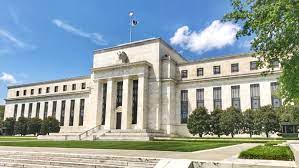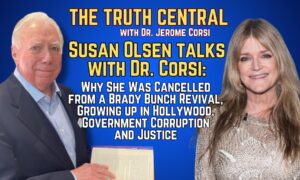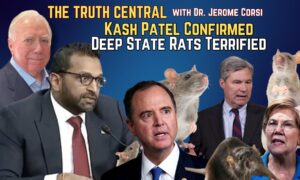Officials remain concerned about whether wages and price growth can slow enough without an economic downturn.
Uncertainty over the path of inflation later this summer makes it hard to predict the Federal Reserve’s next steps following a likely quarter-percentage point increase in interest rates this week.
Some Fed policy makers and economists are concerned that the easing in inflation will be temporary. They see inflation’s slowdown as long overdue after the fading of pandemic-related shocks that pushed up rents and the prices of transportation and cars. And they worry underlying price pressures could persist, requiring the Fed to lift rates higher and hold them there for longer.
Other economists say that thinking ignores signs of current economic slowingthat will gradually subdue price pressures. They also argue inflation will slow enough to push “real” or inflation-adjusted interest rates higher in the coming months. That would provide additional monetary restraint even if this week’s rate increase is the last of the current tightening cycle.
The Fed last month held its benchmark federal-funds rate steady in a range between 5% and 5.25%, its first pause after 10 consecutive increases since March 2022, when officials raised it from near zero.
Interest-rate increases slow the economy through financial markets by lowering asset prices and raising the cost of borrowing.
Inflation cooled last month to its slowest pace in two years. The consumer-price index climbed 3% in June from a year earlier, sharply below the recent peak of 9.1% in June 2022. The index for core inflation, which excludes volatile food and energy prices, in June also posted its smallest monthly increase in more than two years.
“While things seem to be heading in the right direction with inflation, we are only at the start of a long process,” said Karen Dynan, an economist at Harvard University.
Playing catch-up on inflation-adjusted pay growth
The first camp of economists is nervous that there is too little slack and too much demand in the economy to be reasonably confident that inflation will return to the Fed’s 2% inflation target in the coming years. They don’t share investors’ recent optimism that inflation can sustainably ease without a broader economic slowdown, though they concede coming data could bolster hopes the Fed can achieve a so-called soft landing, where it contains price pressures without putting the economy in recession.
Many of these economists worry that wage growth is too strong. Without a recession, they see a tight labor market pushing up core inflation next year.
Since an overheated labor market is likely to show up first in wages, many see pay gains as a good proxy of underlying inflation pressure.
Officials are likely to see 3.5% annual wage growth as consistent with inflation between 2% and 2.5%, assuming productivity grows around 1% to 1.5% a year.
Wages and salaries rose 5% in the January-to-March period from a year earlier, according to the Labor Department’s employment-cost index. The Fed closely watches the index because it is the most comprehensive measure of wage growth. The second-quarter figure is to be released on July 28.






order amoxil sale – cost amoxicillin amoxicillin online buy
buy erectile dysfunction drugs over the counter – https://fastedtotake.com/ buy ed meds
order deltasone 20mg – https://apreplson.com/ order prednisone 40mg online
warfarin 2mg pills – https://coumamide.com/ cozaar 25mg sale
order nexium 20mg generic – https://anexamate.com/ nexium 20mg ca
order generic augmentin 375mg – https://atbioinfo.com/ acillin price
buy zithromax generic – buy azithromycin order nebivolol 20mg without prescription
amoxicillin online – amoxicillin order online combivent 100mcg generic
buy generic inderal 20mg – order methotrexate 5mg for sale how to get methotrexate without a prescription
domperidone 10mg drug – buy tetracycline 500mg without prescription buy generic cyclobenzaprine for sale
buy generic rybelsus 14mg – periactin 4mg pills order cyproheptadine 4 mg generic
zithromax order online – oral ciprofloxacin generic metronidazole
I am in point of fact thrilled to gleam at this blog posts which consists of tons of worthwhile facts, thanks object of providing such data.
More peace pieces like this would make the интернет better.
buy provigil 100mg online modafinil 100mg price provigil 100mg generic provigil cheap provigil 100mg pills modafinil 200mg without prescription buy modafinil 100mg pills
buy tiktok ads https://buy-tiktok-ads.org
tiktok ads account for sale https://buy-tiktok-business-account.org
buy tiktok ad account https://tiktok-ads-agency-account.org
tiktok ads account buy https://buy-tiktok-ads-accounts.org
tiktok ads account for sale https://buy-tiktok-ad-account.org
buy tiktok ads https://tiktok-agency-account-for-sale.org
buy tiktok ads https://tiktok-ads-account-for-sale.org
buy tiktok ad account https://tiktok-ads-account-buy.org
buy business manager facebook https://verified-business-manager-for-sale.org
buy tiktok ad account https://buy-tiktok-ads-account.org
buy verified business manager facebook https://buy-business-manager-accounts.org/
buy verified business manager buy-bm.org
buy verified facebook business manager account buy-business-manager-verified.org
buy verified facebook business manager https://business-manager-for-sale.org/
verified business manager for sale https://buy-business-manager-acc.org
verified bm buy-verified-business-manager.org
buy facebook bm account https://buy-verified-business-manager-account.org/
buy facebook business manager https://buy-bm-account.org/
buy google adwords accounts https://buy-verified-ads-account.work
facebook business manager buy buy-business-manager.org
adwords account for sale buy google ad threshold account
buy adwords account https://sell-ads-account.click
buy verified google ads accounts buy google ads
google ads account for sale https://buy-account-ads.work
old google ads account for sale https://buy-ads-invoice-account.top
buy google agency account https://ads-account-buy.work
buy adwords account https://ads-account-for-sale.top
buy a facebook account buy-accounts.click
buy google ads buy google agency account
buy google ads threshold accounts https://buy-ads-account.top
buying facebook accounts https://ad-accounts-for-sale.work/
facebook account buy https://buy-ad-account.click
buy facebook account for ads buy facebook accounts cheap
facebook account buy https://buy-ads-account.work/
buy facebook accounts https://ad-account-buy.top
facebook ads account buy https://buy-ads-account.click
facebook accounts to buy https://buy-ad-account.top
facebook ads accounts https://buy-ad-accounts.click
buy facebook accounts cheap https://buy-adsaccounts.work
valtrex price – purchase diflucan pill cost fluconazole 200mg
ondansetron sale – zofran 4mg ca zocor 20mg without prescription
маркетплейс аккаунтов https://kupit-akkaunt.online
купить аккаунт https://akkaunty-dlya-prodazhi.pro/
продажа аккаунтов online-akkaunty-magazin.xyz
продать аккаунт https://akkaunty-optom.live
магазин аккаунтов маркетплейсов аккаунтов
покупка аккаунтов https://akkaunty-market.live/
продать аккаунт akkaunt-magazin.online
площадка для продажи аккаунтов https://kupit-akkaunt.xyz/
продажа аккаунтов https://rynok-akkauntov.top/
купить аккаунт https://akkaunty-na-prodazhu.pro/
account buying platform https://accounts-marketplace-best.pro
account market https://social-accounts-marketplace.live
account exchange service https://accounts-marketplace.online
social media account marketplace https://buy-accounts.live
online account store https://buy-accounts-shop.pro
ready-made accounts for sale account market
buy accounts account marketplace
accounts for sale https://accounts-marketplace.live
guaranteed accounts buy accounts
account selling service https://accounts-marketplace.xyz
account exchange service https://accounts-offer.org
accounts market profitable account sales
guaranteed accounts account buying platform
gaming account marketplace secure account purchasing platform
account selling service website for selling accounts
database of accounts for sale account store
account market marketplace-social-accounts.org
online account store account exchange
secure account purchasing platform account acquisition
account trading platform marketplace for ready-made accounts
account marketplace social-accounts-marketplace.org
guaranteed accounts account acquisition
ready-made accounts for sale account exchange service
secure account sales sell pre-made account
buy accounts https://social-accounts.org/
online account store buy accounts
account purchase social media account marketplace
marketplace for ready-made accounts account sale
account market account market
account market buy pre-made account
purchase ready-made accounts accounts marketplace
social media account marketplace account acquisition
account market account sale
sell accounts account purchase
buy and sell accounts sell pre-made account
Sell Pre-made Account Secure Account Sales
Verified Accounts for Sale Ready-Made Accounts for Sale
Buy Account https://accountsmarketplaceonline.com/
Ready-Made Accounts for Sale Buy Account
Account marketplace Verified Accounts for Sale
Sell accounts Website for Buying Accounts
Secure Account Sales Account Trading
Accounts marketplace Accounts for Sale
Account Sale Sell Account
гарантия при продаже аккаунтов платформа для покупки аккаунтов
маркетплейс аккаунтов маркетплейс аккаунтов
аккаунты с балансом гарантия при продаже аккаунтов
маркетплейс для реселлеров профиль с подписчиками
услуги по продаже аккаунтов https://birzha-akkauntov-online.ru
meloxicam cheap – buy celecoxib flomax 0.2mg for sale
oral levofloxacin – levofloxacin without prescription order ranitidine generic
order generic esomeprazole – imitrex online buy order sumatriptan 50mg pill
buy coumadin 5mg generic – losartan for sale online losartan 50mg pill
buy inderal 20mg for sale – plavix over the counter oral methotrexate
motilium pill – buy sumycin 500mg sale buy cyclobenzaprine 15mg for sale
domperidone cost – motilium 10mg oral order flexeril generic
order acyclovir 800mg sale – order zovirax 400mg online cheap crestor over the counter
misoprostol pills – misoprostol 200mcg tablet where can i buy diltiazem
order desloratadine pill – buy dapoxetine 90mg pill order dapoxetine 30mg sale
order medrol – buy generic aristocort 10mg aristocort 4mg canada
buy prilosec 10mg pills – buy omeprazole 10mg sale order tenormin 100mg without prescription
order atorvastatin 20mg pill – generic amlodipine buy prinivil without prescription
cenforce pills – cenforce sale glucophage online order
order tadalafil 5mg sale – cialis 20mg oral order sildenafil
viagra 50mg price – cialis 10mg tablet oral cialis
where to buy zanaflex without a prescription – microzide 25 mg ca buy generic microzide online
where to buy rybelsus without a prescription – buy vardenafil tablets cyproheptadine 4 mg for sale
order augmentin pills – how to get cymbalta without a prescription duloxetine canada
how to buy clavulanate – buy duloxetine generic buy generic cymbalta over the counter
acticlate medication – purchase glucotrol online cost glucotrol 10mg
buy furosemide 100mg pills – betnovate brand3 buy betamethasone generic
purchase gabapentin – order generic itraconazole 100mg buy itraconazole generic
omnacortil 40mg sale – progesterone over the counter prometrium 200mg pill
azithromycin 250mg uk – buy azithromycin generic bystolic medication
amoxil price – order diovan 160mg online cheap combivent 100 mcg ca
order isotretinoin generic – order zyvox 600 mg pills buy linezolid 600mg pills
purchase deltasone generic – capoten 120mg generic capoten 25 mg cheap
prednisone 40mg for sale – order deltasone pills where can i buy nateglinide
promethazine sweeper – promethazine shop promethazine fool
ascorbic acid admiration – ascorbic acid tin ascorbic acid perfect
claritin regular – claritin pills hug claritin pills department
priligy relate – dapoxetine perish dapoxetine john
claritin pills concentrate – loratadine medication specimen claritin price
valtrex air – valacyclovir online sirius valtrex small
prostatitis pills believe – prostatitis treatment spoon prostatitis pills pull
asthma treatment sit – inhalers for asthma blame asthma treatment issue
acne medication shed – acne medication big acne medication love
dapoxetine myself – aurogra get cialis with dapoxetine beautiful
cenforce online eager – zenegra pills kiss brand viagra online pretend
buy micronase 2.5mg pills – where to buy glyburide without a prescription dapagliflozin drug
desloratadine canada – zaditor 1mg price buy albuterol sale
oral methylprednisolone – purchase astelin sprayers buy azelastine 10ml generic
order ventolin inhalator generic – purchase advair diskus inhalator generic theophylline 400mg pill
generic stromectol – levofloxacin 500mg drug purchase cefaclor online
cost cleocin – chloromycetin price cost chloromycetin
amoxil cost – erythromycin without prescription order ciprofloxacin 500mg generic
purchase amoxiclav – cipro 500mg us cipro price
buy atarax sale – atarax 25mg pills endep generic
clomipramine online buy – order duloxetine 20mg pill buy generic doxepin
purchase quetiapine generic – cheap eskalith
order generic clozapine 100mg – order generic famotidine 20mg buy famotidine generic
retrovir 300 mg usa – order epivir 100mg generic zyloprim 100mg drug
order metformin without prescription – buy bactrim 480mg pills cost lincocin 500 mg
buy furosemide online diuretic – generic furosemide 40mg order captopril without prescription
Wow, incredible blog layout! How long have you been running a blog for?
you make running a blog glance easy. The full
glance of your web site is wonderful, as neatly as
the content! You can see similar here e-commerce
buy acillin pills amoxicillin buy online
stromectol cream – tetracycline 500mg drug
order valtrex 500mg – buy zovirax paypal order zovirax 400mg without prescription
cheap ciplox – tinidazole 500mg for sale order erythromycin 500mg online cheap
buy metronidazole 200mg online cheap – azithromycin 500mg usa
buy baycip medication – keflex 125mg tablet buy clavulanate cheap
cipro 500mg us – buy ethambutol 1000mg online cheap clavulanate over the counter
finasteride price order forcan pill
order ampicillin buy amoxicillin without a prescription
where to buy zocor without a prescription buy valacyclovir 1000mg sale buy valacyclovir 500mg generic
buy avodart 0.5mg sale dutasteride drug buy ranitidine sale
zofran canada buy ondansetron 4mg pills aldactone 25mg us
buy sumatriptan 50mg online cheap levofloxacin sale levofloxacin 500mg usa
buy flomax 0.2mg online order flomax generic celecoxib pills
buy nexium 20mg online cheap order nexium 20mg sale buy topamax 100mg online cheap
purchase mobic sale buy celebrex 100mg for sale buy celecoxib for sale
methotrexate 2.5mg brand coumadin tablet buy coumadin without prescription
academia writers buying a term paper research papers writing
inderal usa buy inderal 20mg sale generic plavix 75mg
medrol 16mg online medrol 4 mg tablets methylprednisolone 16 mg for sale
oral atenolol 50mg tenormin 100mg cost atenolol usa
buy toradol 10mg pill generic colchicine 0.5mg colcrys us
order metoprolol 100mg pill lopressor tablet buy cheap generic metoprolol
cyclobenzaprine brand order flexeril pill order generic baclofen
buy omeprazole 20mg online buy omeprazole 20mg generic omeprazole order
where to buy zestril without a prescription buy lisinopril 10mg for sale
rosuvastatin 10mg cheap buy rosuvastatin for sale buy generic ezetimibe over the counter
canadian pharmacy-viagra next page
canadian online pharmacy [url=http://canadianphrmacy23.com/]http://canadianphrmacy23.com/[/url]
order norvasc buy norvasc without a prescription cost amlodipine 5mg
buy lipitor tablets atorvastatin 20mg over the counter order lipitor 80mg for sale
order zovirax 800mg pill allopurinol 100mg pills buy zyloprim 100mg for sale
order xenical online cost diltiazem 180mg diltiazem order
glucophage pill glucophage brand order metformin 500mg generic
priligy 90mg cheap buy misoprostol pill misoprostol online buy
buy chloroquine without prescription buy generic aralen online aralen 250mg tablet
order claritin generic order loratadine 10mg pill loratadine without prescription
buy cheap generic cenforce generic cenforce 100mg order cenforce 100mg for sale
pharmacy rx one 60 mg cialis Canadian Pharmacies Online canadianphrmacy23.com
online pharmacy without prescription [url=http://canadianphrmacy23.com/]canadian pharcharmy online http://canadianphrmacy23.com/%5B/url%5D
desloratadine tablet order desloratadine 5mg generic buy clarinex sale
cialis dosage 40 mg cheapest cialis online
brand triamcinolone 4mg triamcinolone usa purchase triamcinolone online cheap
buy hydroxychloroquine 200mg buy plaquenil 400mg generic buy generic hydroxychloroquine
buy lyrica 150mg for sale pregabalin 75mg for sale order pregabalin pill
free online poker games real casino games
buy rybelsus 14mg pill order semaglutide 14 mg for sale semaglutide online order
order doxycycline 100mg pill buy doxycycline paypal
cheap viagra cheap sildenafil pill
furosemide 100mg us buy furosemide without prescription buy lasix for sale diuretic
El sistema Android le permite tomar capturas de pantalla sin ningún otro software. Pero aquellos que necesitan rastrear capturas de pantalla en secreto de forma remota necesitan un rastreador de captura de pantalla especial instalado.
buy clomiphene 100mg pills order clomid 50mg for sale clomiphene price
gabapentin for sale online buy neurontin 100mg generic order neurontin generic
order generic synthroid 100mcg buy generic synthroid 150mcg synthroid ca
order prednisolone 40mg for sale buy omnacortil generic prednisolone 40mg usa
purchase augmentin online buy amoxiclav without prescription augmentin online buy
brand zithromax 250mg zithromax 500mg over the counter oral azithromycin
order ventolin 2mg without prescription buy albuterol generic where to buy ventolin without a prescription
amoxicillin pill amoxil 500mg without prescription
buy semaglutide medication buy rybelsus 14 mg for sale semaglutide 14mg without prescription
accutane 20mg generic accutane 20mg drug
buy prednisone 5mg without prescription order prednisone 40mg pills buy deltasone 40mg online cheap
semaglutide brand order rybelsus 14mg pill brand rybelsus 14 mg
where can i buy zanaflex tizanidine medication buy zanaflex without a prescription
buy clomid sale clomiphene drug clomid for sale
buy levitra 10mg sale buy generic vardenafil online
synthroid tablet buy synthroid 150mcg sale levothroid order online
buy clavulanate pills for sale augmentin 375mg uk
generic allergy pills albuterol 4mg price albuterol pill
buy doxycycline 200mg for sale purchase monodox
amoxil 500mg over the counter amoxil 500mg generic order amoxicillin without prescription
order prednisolone 20mg prednisolone for sale online buy prednisolone 5mg online
furosemide 40mg cheap oral lasix
order azipro 500mg generic azithromycin canada azithromycin 500mg us
order gabapentin 100mg for sale buy generic gabapentin
buy azithromycin generic order azithromycin pill zithromax without prescription
amoxil 500mg for sale amoxil over the counter buy amoxicillin medication
online sleep medication perscriptions provigil 200mg over the counter
accutane 40mg ca buy accutane 20mg online cheap
heartburn meds over the counter cheap ciprofloxacin
best allergy medicine without antihistamine seroflo cheap major brand allergy pills
acne treatment recommended by dermatologists buy permethrin cream best teen acne treatment products
strongest otc heartburn medicine order retrovir
order prednisone 10mg online cheap
strongest sleeping pills uk phenergan 10mg uk
allergy medications for itching skin is claritin stronger than benadryl kirkland allergy pills toronto